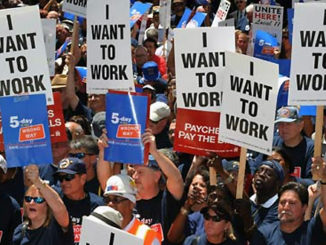
Late Wednesday, March 25, the Senate unanimously approved an historic stimulus bill – the Coronavirus Aid, Relief and Economic Security Act (“CARES Act”) – to provide significant aid to the American people and businesses impacted by the coronavirus pandemic. The text of the bill is a lengthy 880 pages and as expected, provides significant relief for small business and expanded unemployment benefits for individuals. Below are some highlights.
Payroll Tax Relief
The CARES Act includes nine business tax provisions, including a credit to retain workers during COVID-19 related closures, deferral of payroll tax payments for two years, a change to the tax treatment of business losses and some technical corrections to the Tax Cuts and Jobs Act. Below are some key points on the payroll tax credit and payroll deferments.
Tax Credit:
This provision provides eligible employers with a refundable tax credit against the employer’s share of payroll taxes for applicable employment taxes. For each calendar quarter during the applicable period, the employer can receive a credit in an amount equal to 50% of qualified wages (inclusive of health insurance) up to $10,000 per employee per quarter ending on December 31, 2020. The credit is treated as a refund if it exceeds the employer’s applicable employment taxes for a given quarter.
A business is eligible for this tax credit in two ways: (i) If operations were partially or fully suspended due to a mandatory government shut-down related to COVID-19; or (ii) if the business remained opened during any quarter in 2020 but gross receipts for that quarter were less than 50% of what they were for the same quarter in 2019. The business will then be entitled to a credit for each quarter, until the business has a quarter where gross receipts exceed 80% of what they were for the same quarter in the previous year.
Eligible employers. Employers with greater than 100 employees are eligible to receive the credit if they continue to pay employees that are not providing services. Employers with fewer than 100 employees may receive the credit if they continue to pay employees whether they are or are not providing services.
For purposes of this credit, qualified wages do not include wages paid under the Families First Coronavirus Response Act for sick leave or family medical leave, which are already subject to certain tax credits.
If an employer takes out a payroll protection loan under Section 7(a) of the Small Business Act as amended by this Act, no employee retention credit will be available.
Tax Deferral of Payroll Tax:
The CARES Act allows a 50% deferral of the employer’s share of the 6.2% Social Security tax that would otherwise be due from the date of the CARES Act’s enactment through December 31, 2020.
A payment of 50% of the deferred payroll taxes would be due on December 31, 2001 and the remaining amount by December 31, 2022 (50%).
A taxpayer who is self-employed can defer paying 50% of his or her self-employment tax that would be due from the date of the CARES Act’s enactment through the end of 2020 until the end of 2021 (25%) and 2022 (25%).
Under this provision, an employer can defer payment of payroll taxes for two years and still take immediate advantage of the new payroll tax credits described above, as well as credits for payment of emergency sick and family leave under the Families First Coronavirus Response Act, if applicable.
If an employer takes out a payroll protection loan under Section 7(a) of the Small Business Act as amended by this Act, no payroll tax deferral will be available.
Small Business Assistance
The CARES Act allocates approximately $350 billion for small business assistance. The United States Small Business Administration (the “SBA”) will administer the SBA 7a loan program created to eligible businesses to help pay operational costs like payroll, rent, health benefits, insurance premiums, utilities, etc. Subject to certain conditions, loan amounts are forgivable if employers retain employees. We can report the following specifics:
Small Businesses with 0-500 employees are eligible to apply.
The loans reward businesses for keeping workers on payroll (this is retroactive to February 1, 2020 for those laid off on or after that date).
The loans allow businesses to pay employees, mortgages and lease payments.
Loan amounts can be up to 2.5 times a company’s annual to average monthly payroll (between January 1, 2020 and February 29, 2020), mortgage payments and lease payments (this excludes compensation paid to any one employee over $100k). Maximum loan amount is $10 million.
An advance grant of up to $10k can be requested 3 days after applying for the loan. Even if the business is denied the loan, the advance will not have to be paid back provided it is used for business expenses such as payroll and rent payments.
No personal guaranty or collateral is required.
Independent contractors, 1099 workers, self-employed individuals and sole proprietorships are eligible to apply.
Interest rates would be maximum 4% with 10-year term.
Restaurants and hotels are eligible as long as they employ 500 workers or less per location.
Loan forgiveness. A second application must be filed for loan forgiveness. That portion of the loan used for:
Payroll (less any reduction in payroll over 25% who earn 100k or less – so if the business laid off 25% of their workers and the workers each made 100k or less –this amount would be deducted from the total loan forgiveness)
Lease payments
Mortgage payments
**Any amount forgiven will not be taxable income
Businesses with current SBA loans can suspend certain payments and this program may not be exclusive.
It is not clear however, when businesses will be able to apply for these loans. In the interim there are other programs currently available and funding, including, but not limited to:
NYC Employee Retention Grants
NYC Business Continuity Loans
NYS Emergency Loans
SBA Disaster Relief Loans
Expanded Unemployment Benefits
Who is Covered?
The CARES Act has substantially expanded benefits to the types of workers that would usually not be eligible for unemployment benefits. This expansion of coverage now includes Individuals who are self-employed (e.g., gig workers – Uber Drivers, and other part-time workers such as bartenders and waiters – freelancers, and independent contractors).
Covered individuals include those who are unemployed, partially unemployed or unable to work because:
*an individual has been diagnosed with COVID-19 or is experiencing symptoms and is seeking a medical diagnosis;
*an individual has a member of the household diagnosed with COVID-19;
*an individual is providing care for a family member or member of the household diagnosed with COVID-19;
*an individual is the primary caregiver and relies on a school or another facility to care for a child, elderly parent or another household member in order to work and that school or facility has been closed because of COVID-19;
*an individual is unable to get to work because of a quarantine imposed as a direct result of COVID-19;
*an individual is unable to get to work because such individual has been advised by a health care provider to self-quarantine due to concerns related to COVID-19;
*an individual was scheduled to commence employment and does not have a job or is unable to get to such job as a direct result of COVID-19;
*an individual has become the breadwinner or major support of a household because the head of the household has died as a direct result of COVID-19;
*an individual has to quit his or her job as a direct result of COVID-19;
*an individual’s place of employment is closed as a direct result of COVID-19; or
*an individual meets any additional criteria to be established by the Secretary of the Treasury.
Under the CARES Act part-time workers would be eligible for benefits, but benefit amounts and the duration of benefits will depend on each state’s unemployment insurance program.
Individuals who can work from home, and those receiving paid sick leave or paid family leave, are not covered.
What are the Benefits?
Exact unemployment benefits will depend on each state’s unemployment insurance program. However, under the CARES Act, covered individuals would be entitled to receive an extra $600 per week in addition to their state benefits;
In New York, an individual would be eligible for the maximum state unemployment benefit of $504 per week and under the CARES Act would receive an additional $600 of federal compensation;
States will have the option of providing the entire amount in one payment or sending the additional payment separately; provided that both payments have to be made on the same weekly basis.
Benefit amounts for self-employed individuals would be calculated based on previous income, using a formula from the Disaster Unemployment Assistance program;
Self-employed workers would also be eligible for the additional $600 weekly benefit.
The CARES Act would provide all eligible individuals with an additional 13 weeks of payments following the end of state benefit programs; provided that the total period cannot exceed 39 weeks (certain states may adopt shorter periods);
The extra $600 payment would last for up to four months, covering weeks of unemployment ending July 31, 2020;
Expanded coverage would be available to workers who were newly eligible for unemployment benefits for weeks starting on Jan. 27, 2020 and through Dec. 31, 2020;
The additional $600 benefit would count as income when determining eligibility for means-tested programs, except for Medicaid and the Children’s Health Insurance Program; and
States have been incentivized to waive the one-week waiting period, but processing claims may take some time given the current climate.
Individual Payments
The CARES Act will provide direct payments to individuals depending on income.
$1,200 per single individual who earns up to $95,000 in adjusted gross income;
$2,400 for married couples who earn up to $150,000; and
An additional payment of $500 per child under the age of 17.
The payment would scale down by income, phasing out entirely at $99,000 for singles and $198,000 for couples without children. Qualifying income levels will be based on 2019 federal tax returns, if already filed, and otherwise on 2018 returns. (Treasury Secretary Steven Mnuchin earlier this month delayed the filing deadline until July 15.) Payments should be received in three weeks.
UNDERSTANDING HOW THE STIMULUS PACKAGE AFFECTS YOU
It is important for companies to understand how the CARES Act may benefit your business. This can be an overwhelming process. Contact us today to see how we can assist you in navigating available benefits, applications for these programs and weighing your particular eligibility for them. If you have questions, please contact the attorneys below. As always, you may also contact your regular Warshaw Burstein attorney.
(Source: Warshaw Burstein, LLP – www.wbny.com)





Be the first to comment